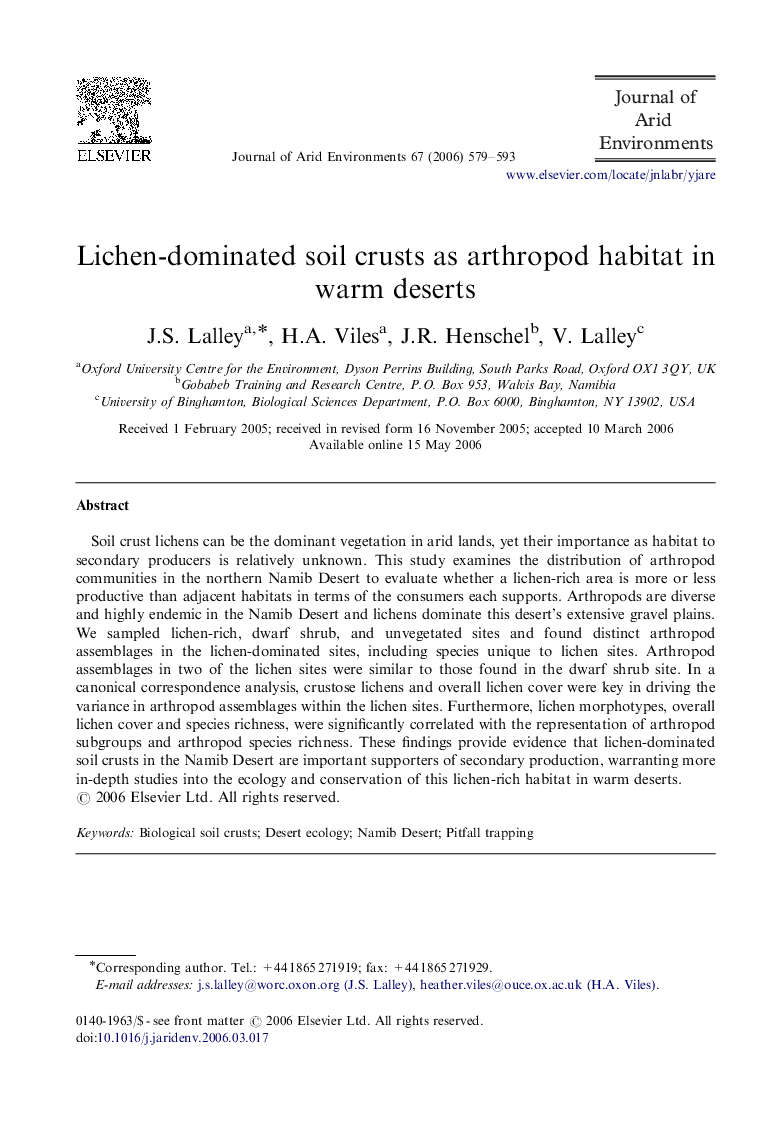| Article ID | Journal | Published Year | Pages | File Type |
|---|---|---|---|---|
| 4394809 | Journal of Arid Environments | 2006 | 15 Pages |
Soil crust lichens can be the dominant vegetation in arid lands, yet their importance as habitat to secondary producers is relatively unknown. This study examines the distribution of arthropod communities in the northern Namib Desert to evaluate whether a lichen-rich area is more or less productive than adjacent habitats in terms of the consumers each supports. Arthropods are diverse and highly endemic in the Namib Desert and lichens dominate this desert's extensive gravel plains. We sampled lichen-rich, dwarf shrub, and unvegetated sites and found distinct arthropod assemblages in the lichen-dominated sites, including species unique to lichen sites. Arthropod assemblages in two of the lichen sites were similar to those found in the dwarf shrub site. In a canonical correspondence analysis, crustose lichens and overall lichen cover were key in driving the variance in arthropod assemblages within the lichen sites. Furthermore, lichen morphotypes, overall lichen cover and species richness, were significantly correlated with the representation of arthropod subgroups and arthropod species richness. These findings provide evidence that lichen-dominated soil crusts in the Namib Desert are important supporters of secondary production, warranting more in-depth studies into the ecology and conservation of this lichen-rich habitat in warm deserts.
